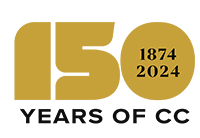Introduction
Curricular goals establish in a general way what you want students to get out of your major or minor and learning outcomes specify precisely what you want students to know and be able to do at the end of a course, major, or minor.
You use a curricular map to make sure the learning outcomes you care about are being taught in required courses so that students will know and be able to do what you intend. Demonstrations of student learning are examples of student work that are reviewed to determine whether the student did, partially did, or did not learn the knowledge and skills desired by the department or program. This is what we commonly refer to as the actual assessment.
Finally, rubrics are criterion-based rating scales that simplify and standardize the demonstration of student learning (knowledge, skills, or both) for easier and clearer review.
The components should be developed in the following order:
- Curricular goals
- Learning outcomes
- Curricular map
- Demonstrations of student learning (often called "assessment methods" or "assessment measures"), and
- Rubrics



